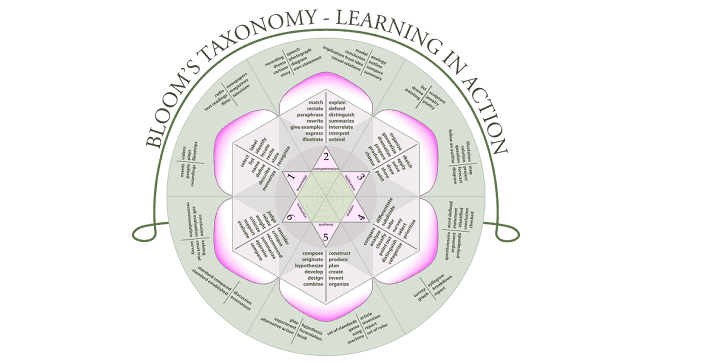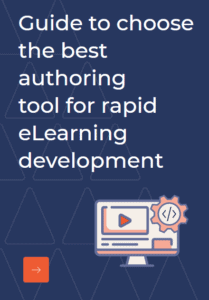Taxonomy, interesting term indeed. But people of science would say that Taxonomy is a branch of science that encompasses the description, identification, nomenclature, and classification of organisms [1].
So, Bloom’s Taxonomy??
Well to be fair it does classify forms of learning, transforms it into a hierarchy of educational objectives. The objectives are then broken down into subdivisions ranging from simple to complex.
Though the Bloom’s Taxonomy covers three domains: The cognitive domain (knowledge-based), the affective domain (emotive-based) and the psychomotor domain (action-based), most eLearning creators focus on the first. We shall discuss about the Cognitive domain in this blog and cover the rest in a different post later.
The Original Version
Quoting directly from Wikipedia, “Although named after Bloom, the publication of Taxonomy of Educational Objectives followed a series of conferences from 1949 to 1953, which were designed to improve communication between educators on the design of curricula and examinations. [2]” The main categories in from the appendix of Taxonomy of Educational Objectives [3] are as follows:
- Knowledge “involves the recall of specifics and universals, the recall of methods and processes, or the recall of a pattern, structure, or setting.”
- Comprehension “refers to a type of understanding or apprehension such that the individual knows what is being communicated and can make use of the material or idea being communicated without necessarily relating it to other material or seeing its fullest implications.”
- Application refers to the “use of abstractions in particular and concrete situations.”
- Analysis represents the “breakdown of a communication into its constituent elements or parts such that the relative hierarchy of ideas is made clear and/or the relations between ideas expressed are made explicit.”
- Synthesis involves the “putting together of elements and parts so as to form a whole.”
- Evaluation engenders “judgments about the value of material and methods for given purposes.”
The 2001 Version
Though Bloom’s Taxonomy was used prevalently by educators around the world, it still seemed a bit too complex in its own way. So, in 2001 a group of cognitive psychologists, curriculum theorists and instructional researchers, and testing and assessment specialists published a revision of Bloom’s Taxonomy with the title A Taxonomy for Teaching, Learning, and Assessment.
They used “action verbs” to describe cognitive processes.
- Understand
- Interpreting
- Exemplifying
- Classifying
- Summarizing
- Inferring
- Comparing
- Explaining
- Apply
- Executing
- Implementing
- Analyze
- Differentiating
- Organizing
- Attributing
- Evaluate
- Checking
- Critiquing
- Create
- Generating
- Planning
- Producing
The categories were quite simpler to understand and specifics are elaborated further on. To top that there are categories even for knowledge:
- Factual Knowledge
- Knowledge of terminology
- Knowledge of specific details and elements
- Conceptual Knowledge
- Knowledge of classifications and categories
- Knowledge of principles and generalizations
- Knowledge of theories, models, and structures
- Procedural Knowledge
- Knowledge of subject-specific skills and algorithms
- Knowledge of subject-specific techniques and methods
- Knowledge of criteria for determining when to use appropriate procedures
- Metacognitive Knowledge
- Strategic Knowledge
- Knowledge about cognitive tasks, including appropriate contextual and conditional knowledge
- Self-knowledge
If we were to draw parallels with scientific taxonomy, Bloom’s taxonomy to would have equivalents for Phylum, class, order, family, genus etc. The image below indicates just that.
As with anything, Bloom’s taxonomy too has had its share of debates, criticisms but is still used as a reference point by many. It takes a lot to understand the workings of a human brain/cognition, and Bloom’s taxonomy can be a guide, and not a precision tool. The trick lies in how we interpret and utilize it.
References:
- https://en.wikipedia.org/wiki/Taxonomy
- https://en.wikipedia.org/wiki/Bloom%27s_taxonomy#History
- Bloom, B. S.; Engelhart, M. D.; Furst, E. J.; Hill, W. H.;Krathwohl, D. R. (1956). Taxonomy of educational objectives: The classification of educational goals. Handbook I: Cognitive domain. New York: David McKay Company.



